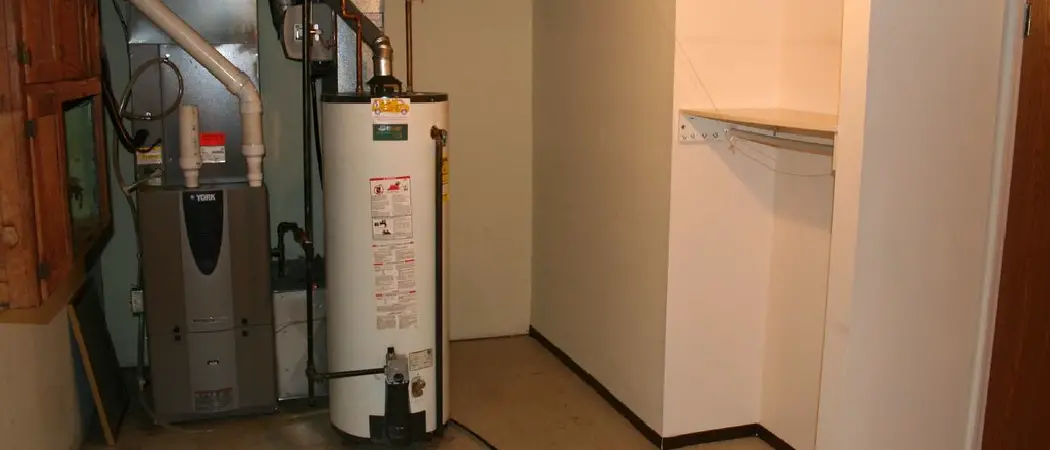Ensuring the safety and efficiency of your home’s water heater is paramount, especially when considering modifications like adding a power vent. In this comprehensive guide, we delve into the question many homeowners ponder: Can I add a power vent to my water heater? With a blend of expert analysis and practical advice, we navigate through the intricacies of this important decision, shedding light on considerations, benefits, and potential pitfalls.
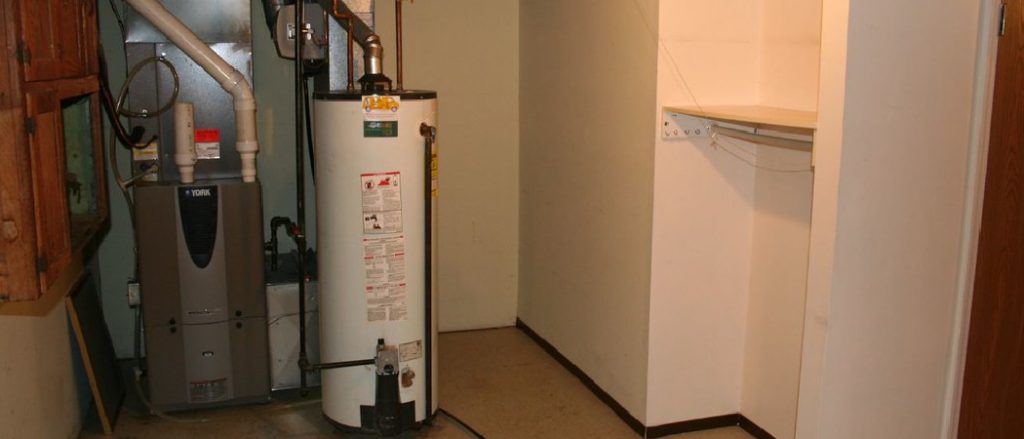
Whether you’re a seasoned DIY enthusiast or seeking professional guidance, join us as we explore the ins and outs of enhancing your water heater’s performance while prioritizing safety and peace of mind.
Exploring Water Heater Venting
What is Venting?
Venting is a crucial aspect of any water heater system. It’s the process of evacuating dangerous byproducts produced during combustion, such as carbon monoxide and other gases, to the outside of your home.
Water heaters come in different types, including atmospheric (natural draft), power vented, direct-vented, and condensing models. Each of these types has specific venting requirements that must be followed for the system to operate safely and efficiently.
Natural Draft vs. Power Vent
A natural draft water heater system relies on convection to move the exhaust gases out of your home through a vertical chimney or flue pipe. This type of ventilation is often used in older homes with conventional water heaters located in the basement or utility room.
On the other hand, a power vent system uses a fan to force the exhaust gases out through a horizontal pipe. This type of ventilation is typically required when your water heater is located in an interior space with inadequate natural draft conditions.
Different Types of Venting Systems
As mentioned earlier, there are different types of venting systems used in water heaters. Here’s a brief overview of each type:
- Natural Draft – This is the most common and simplest type of venting system for water heaters. It uses the natural buoyancy of hot air to move exhaust gases out through an upright chimney or flue.
- Power Vent – This type of venting system uses a fan to push exhaust gases produced during combustion out through a horizontal pipe.
- Direct Vent – Similar to power vents, direct vent systems use a fan to force the exhaust gases out. However, they also draw in fresh air from outside for combustion, eliminating the need for a vertical chimney or flue.
- Condensing – This type of water heater produces a small amount of exhaust gas, which is cooled and condensed into water that can be safely drained out through a PVC pipe. Condensing water heaters are highly efficient but require a specific type of venting called a “condensate drain.”
Overview of Power Vents
What is a Power Vent?
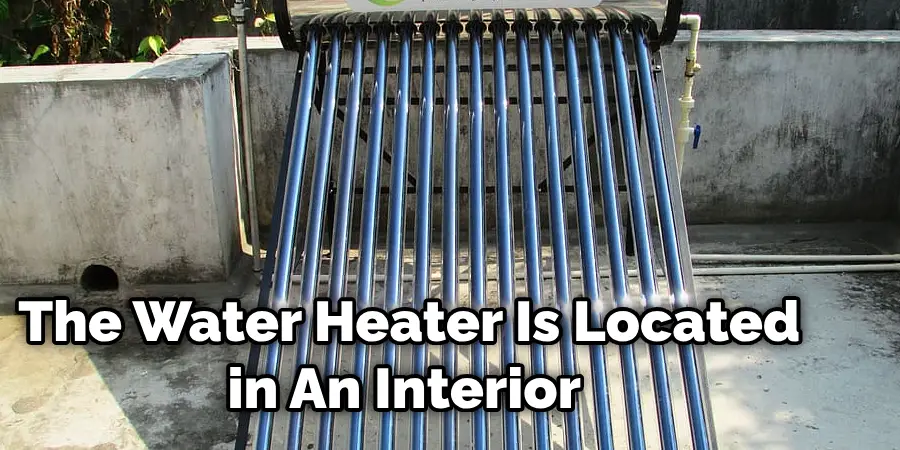
A power vent is essentially a fan that attaches to the top of your water heater and blows exhaust gases out through a horizontal pipe. It’s often used in situations where natural draft venting is not possible, such as when the water heater is located in an interior space with no access to a vertical chimney or flue.
How Power Vents Work
A power vent system operates by drawing in air from the room, heating it up to ignite the gas burner, and then pushing out the exhaust gases through a horizontal pipe. The fan is controlled by a pressure switch that ensures proper ventilation and safety.
Can I Add a Power Vent to My Water Heater: Benefits and Considerations
Benefits of Adding a Power Vent to Your Water Heater
Adding a power vent system to your water heater can bring about several benefits, including:
- Improved efficiency – A power vented water heater system allows for more flexibility in the placement of your water heater, as it doesn’t rely on natural draft conditions. This means you can install your water heater in a more convenient location, resulting in increased efficiency.
- Enhanced safety – Power vented water heaters eliminate the risk of back-drafting, which occurs when exhaust gases are not adequately removed from the home. This can result in the buildup of dangerous carbon monoxide gas, posing a significant health hazard.
- Compliance with building codes – If your current water heater setup doesn’t meet local building codes, adding a power vent system can bring it up to code. This is especially important for older homes that may not have been built with modern safety standards in mind.
Considerations When Adding a Power Vent to Your Water Heater
While there are many benefits to adding a power vent system, there are also some considerations you should keep in mind:
- Cost – Adding a power vent system can be more expensive than traditional natural draft systems due to the additional components and installation requirements.
- Electricity supply – Since a power vent system relies on a fan, it will require an electrical connection. This may add to the overall cost of your upgrade.
- Venting location – Power vented water heaters must be located near an exterior wall to allow for proper venting. This may limit your options for placement.
- Condensation – If you have a condensing water heater, you will also need to install a condensate drain as part of the power vent system. This can add extra complexity and cost to the installation process.
Assessing Your Water Heater in Case You Need to Add Power Vent to Your Water Heater
Do You Need to Add a Power Vent?
If you’re unsure whether you need to add a power vent system, here are some signs that may indicate it’s necessary:
- Your current water heater is located in an interior space with no access to a vertical chimney or flue.
- You notice signs of back-drafting, such as soot buildup around the water heater or a burning smell in your home.
- Your local building codes require power venting for water heaters.
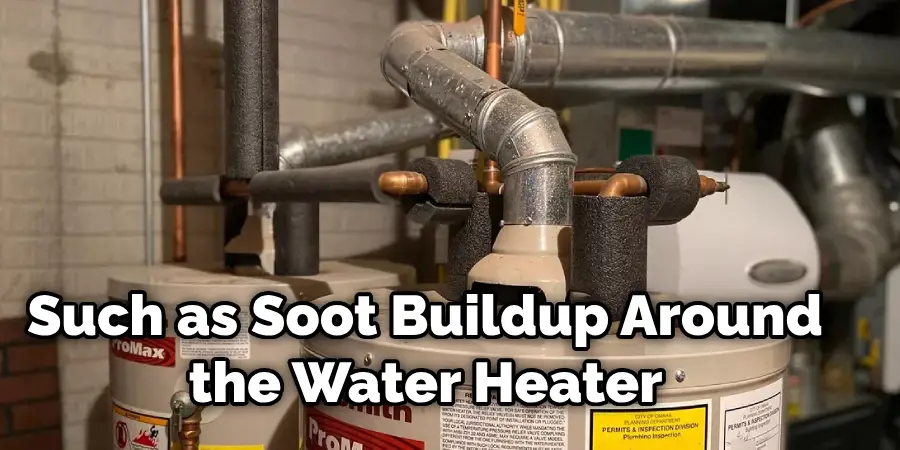
Factors to Consider
When assessing whether you need to add a power vent system, here are some factors to consider:
- The type of water heater – Not all types of water heaters can be fitted with a power vent system. Consult with a professional plumber or HVAC technician to determine if your current water heater is compatible.
- The cost – As mentioned earlier, adding a power vent system can be more expensive than traditional natural draft systems. Be sure to factor in the cost of installation before making a decision.
- Space limitations – Power vented water heaters must be located near an exterior wall for proper venting. If space is limited, this may affect your decision to add a power vent system.
- Local building codes – If your current water heater setup doesn’t meet local building codes, adding a power vent system may be necessary to bring it up to code.
How to Add a Power Vent to Your Water Heater: Step-by-Step Guide
Step 1: Gather Necessary Tools and Materials
Before you begin, make sure you have all the necessary tools and materials on hand. These may include a power vent kit, pipe cutter, screwdriver, drill, PVC pipes and fittings, electrical wiring, and duct tape.
Step 2: Turn off the Power
Make sure to turn off the power supply to your water heater before starting any work. This will ensure your safety and prevent any electrical accidents.
Step 3: Measure and Cut PVC Pipes
Measure and cut the PVC pipes to fit the distance between your water heater and the exterior wall where you plan to install the power vent. Make sure to include any necessary bends in the pipes for proper venting.
Step 4: Install the Power Vent
Follow the manufacturer’s instructions to install the power vent onto the top of your water heater.
Step 5: Install PVC Pipes and Fittings
Attach the PVC pipes and fittings to the power vent, making sure they are properly aligned and secured with duct tape or pipe clamps.
Step 6: Drill Hole in Exterior Wall
Using a drill, create a hole in the exterior wall where you plan to vent the exhaust gases.
Step 7: Connect PVC Pipe to Exterior Wall
Attach the PVC pipe to the hole in the exterior wall using appropriate fittings and caulking to ensure a secure connection.
Step 8: Wire the Power Vent
Connect the power supply wiring for the fan motor according to the manufacturer’s instructions.
Step 9: Test and Check for Proper Operation
Turn on the power supply and test the system to ensure it is running smoothly. Check for any leaks or other issues and make adjustments if necessary.
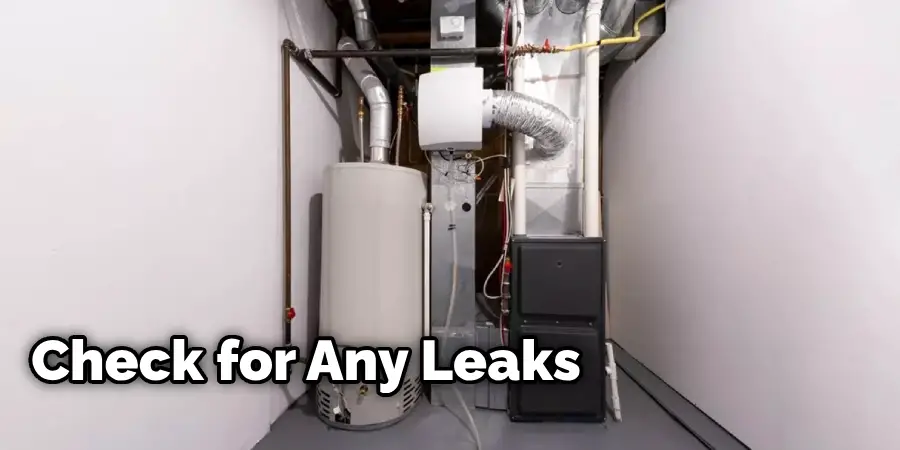
Hiring a Professional vs. DIY
Hiring a Professional
If you need more confidence in your ability to install a power vent system yourself, it’s best to hire a professional plumber or HVAC technician. They have the experience and expertise to ensure the installation is done correctly and safely.
DIY
If you have experience with plumbing or HVAC systems, you may be able to install a power vent system yourself. However, make sure to carefully follow all manufacturer instructions and building codes to ensure proper installation.
Cost Considerations
The cost of adding a power vent system can vary depending on factors such as the type of water heater, the complexity of the installation, and the materials used. On average, homeowners can expect to pay anywhere from $500 to $1,500 for a power vent system.
Safety and Code Compliance
Safety
Adding a power vent system to your water heater can improve its safety by properly venting out exhaust gases. This helps prevent potential hazards such as carbon monoxide buildup and back-drafting.
Code Compliance
In many areas, local building codes require power venting for water heaters. It’s important to ensure your installation meets these codes to avoid any potential penalties or safety hazards.
Maintenance Tips for Power Vented Water Heaters
Regular Inspections
Schedule regular inspections of your power vent system to ensure it is functioning properly. Look for any signs of wear and tear and address any issues promptly.
Clean the Venting System
Periodically clean the venting system to remove any debris or buildup that can obstruct proper ventilation.
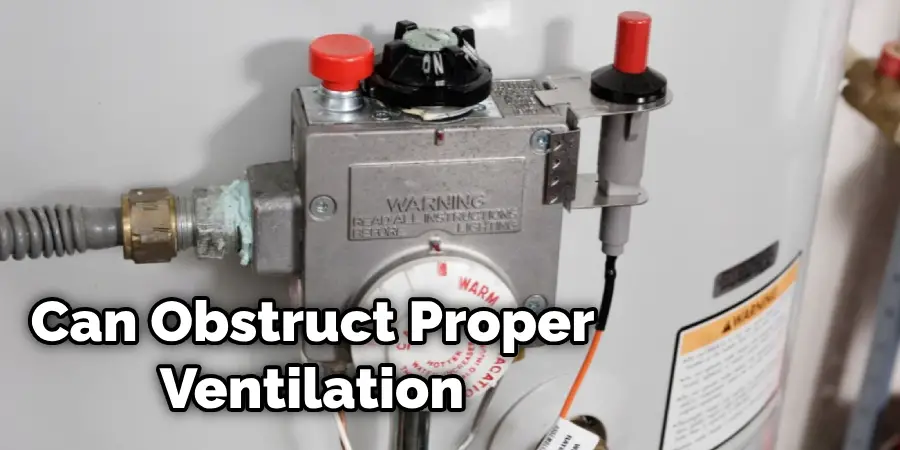
Check for Leaks
Regularly check for leaks in the piping and connections and make repairs as needed to avoid any potential hazards.
Flush the Water Heater
Flushing your water heater every 6-12 months can help prevent sediment buildup, which can affect the performance of your power vent system.
Test the Pressure Relief Valve
Make sure to test the pressure relief valve on your water heater every six months to ensure it is functioning properly.
Monitor Carbon Monoxide Detectors
If you have a power vented water heater, it’s important to have carbon monoxide detectors installed in your home for added safety. Regularly check and replace their batteries as needed.
Follow Manufacturer Instructions
Always follow the manufacturer’s instructions for the maintenance and care of your specific power vent system. This will ensure its longevity and proper functioning.
Overall, adding a power vent system to your water heater is a decision that requires careful consideration of various factors such as compatibility, cost, space limitations, and local building codes. If you decide to proceed with installation, make sure to follow the proper steps and maintain the system regularly for optimal performance and safety.
Troubleshooting tips for common problems
Power Vent Not Running
If your power vent system is not running, first check the power supply and make sure it’s turned on. If the issue persists, there may be a problem with the fan motor or electrical wiring that will require professional repair.
Leaking Pipes
If you notice any leaks in your power vent system, they should be addressed promptly to prevent water damage. Check all connections and fittings for loose or damaged parts and make repairs as needed.
Insufficient Ventilation
If your power vent system appears to be functioning properly but you notice inadequate ventilation, there may be an obstruction in the vent pipe. Remove any debris or buildup that may be blocking the exhaust gases.
Noise Issues
If your power vent system is making unusual noises, it could be a sign of loose or damaged parts. Inspect the system and make any necessary repairs to prevent further issues.
Carbon Monoxide Leaks
If you suspect a carbon monoxide leak from your power vented water heater, immediately turn off the power supply and call a professional for help. Install carbon monoxide detectors in your home as an added safety measure.
Remember to always prioritize safety and follow manufacturer instructions for proper installation and maintenance of your power vent system. With regular care and upkeep, your water heater can function efficiently and safely for years to come.
Frequently Asked Question
Q: What Is a Power Vent Water Heater?
A: A power vent water heater is a type of water heating system that utilizes a fan or blower to expel combustion gases from the unit through a vent pipe. This design allows for flexibility in the placement of the water heater, as it does not require a traditional chimney for venting.
Q: How Does a Power Vent Water Heater Work?
A: In a power vent water heater, the combustion process generates hot gases that need to be safely expelled from the unit. A fan or blower located near the top of the water heater helps to create a draft, pulling the combustion gases through the vent pipe and safely venting them outside.
Q: Can I Add a Power Vent to My Existing Water Heater?
A: Whether you can add a power vent to your existing water heater depends on several factors, including the type
Conclusion
In conclusion, the successful installation and maintenance of a power vented water heater can greatly enhance the safety and efficiency of your home’s heating system. Whether you choose to undertake this project as a DIY endeavor or decide to hire a professional, it is crucial to adhere to all safety guidelines, manufacturer instructions, and local building codes.
Remember, the initial investment in time and resources can lead to long-term benefits, including optimized performance, energy savings, and a safer living environment. With regular maintenance and troubleshooting, your power vented water heater can be a reliable source of comfort for many years. Thanks for reading this article, “can i add a power vent to my water heater?”
{ “@context”: “https://schema.org”, “@type”: “FAQPage”, “mainEntity”: [ { “@type”: “Question”, “name”: “What Is a Power Vent Water Heater?”, “acceptedAnswer”: { “@type”: “Answer”, “text”: “A power vent water heater is a type of water heating system that utilizes a fan or blower to expel combustion gases from the unit through a vent pipe. This design allows for flexibility in the placement of the water heater, as it does not require a traditional chimney for venting.” } }, { “@type”: “Question”, “name”: “How Does a Power Vent Water Heater Work?”, “acceptedAnswer”: { “@type”: “Answer”, “text”: “In a power vent water heater, the combustion process generates hot gases that need to be safely expelled from the unit. A fan or blower located near the top of the water heater helps to create a draft, pulling the combustion gases through the vent pipe and safely venting them outside.” } }, { “@type”: “Question”, “name”: “Can I Add a Power Vent to My Existing Water Heater?”, “acceptedAnswer”: { “@type”: “Answer”, “text”: “Whether you can add a power vent to your existing water heater depends on several factors, including the type…” } } ] }
